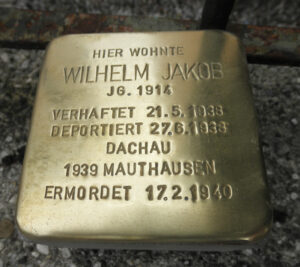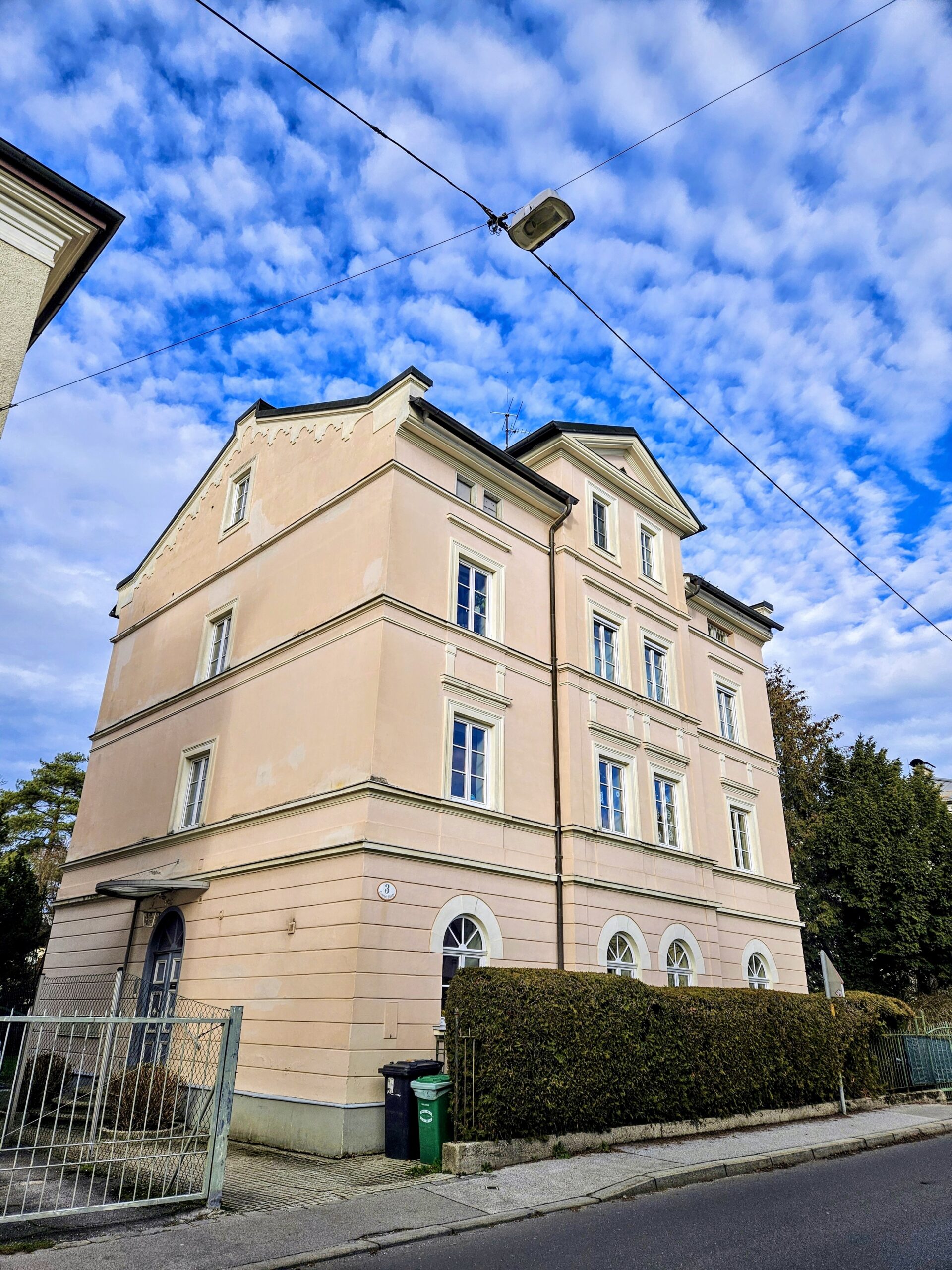Wilhelm JAKOB was born in Salzburg-Maxglan on April 27, 1914. He was an unmarried Catholic, copper fitter and plumber. He was the youngest of the five children of the cabinet maker Johann JAKOB and his wife Josefa.
The JAKOB family had local citizenship rights in the independent municipality of Maxglan which was annexed to the city of Salzburg in and lived in the house at 3 Ganshofstraße.
In November 1933 the 19 year old Wilhelm JAKOB enrolled for six years of service in the Austrian army. In July 1937 he was promoted to private first class, and in March 1938 to corporal.
He served in the Salzburg Infantry-Regiment Nr. 12 (formerly known as the 3rd Alpine-Battalion) which maintained the traditions and quarters of the Austro-Hungarian Erzherzog Rainer 59th Imperial and Royal Infantry Regiment that had been stationed in barracks on the Franz-Josef-Kai [the former Lehener Kaserne barracks are now the home of the Christian-Doppler-Gymnasium].
In July 1934 Jakob was an ordinary private in the 2nd company under the command of Captain Franz ROSENKRANZ that had been involved in combat at Lamprechthausen near Salzburg – fighting that contributed to the defeat of the Austrian Nazi’s attempt to seize power by force (an attempted putsch that led to the murder of Austro-Fascist Chancellor Dolfuss by the Nazis).
Six Nazis and two soldiers were killed at Lamprechthausen, Josef Gassner and Viktor Mayr. Staff sergeant Anton Fingernagel had been badly wounded in Lamprechtshausen on July 28, 1934, but he had recovered quickly and had returned to service until the Nazis took over Austria in March 1938.
He was then suspended from service and locked in the police jail on the Rudolfsplatz.
On April 19, 1938 the 29 year old non-commissioned officer was dead: a police doctor certified the death as a suicide, but that isn’t necessarily true.
Under the Nazi regime numerous former functionaries of the Austrian dictatorship – prosecutors, judges, and officers, including Captain Franz Rosenkranz – became victims of political revenge and denunciation. Prominent victims are well known but more ordinary victims have mostly been forgotten. Corporal Wilhelm JAKOB was arrested by the Gestapo on May 21, 1938 and was deported to the Dachau concentration camp on June 27th.
There he was registered as »protective custody« prisoner Nr. 17539. On August 12th Jakob learned during his hearing at the Dachau district court that he had been charged with aggravated assault in the Salzburg State Court.
Someone must have slandered him.
According to his file, in May 1938 one of Wilhelm Jakob’s former comrades from the 12th Infantry Regiment claimed Jakob had shot a Storm-trooper in the knee at Lamprechtshausen in July 1934 and that Jakob was a »radical Communist«.
The court concluded that JAKOB’s former comrade hadn’t been involved in the events in Lamprechtshausen and that therefore his account wasn’t credible. But Jakob continued to be held in the concentration camp.
Wilhelm Jakob was transferred from Dachau to the Mauthausen concentration camp on September 27, 1939, and the 26 year old was murdered there on February 17, 1940 – the official cause of death was »general cardiac and circulatory insufficiency«.
The parents Josefa and Johann JAKOB died in the city old age home in Nonntal in 1950.
Over the course of their lives they had lost three children: their son Johann who died at age 19 in the First World War, their 26 year old son Wilhelm in the Mauthausen concentration camp, and their 42 year old son Franz who was killed towards the end of World War Two.
Sources
- Salzburg City and State archives
- Mauthausen and Dachau Concentration Camp Memorials
Translation: Stan Nadel
Stumbling Stone
Laid 19.04.2013 at Salzburg, Ganshofstraße 3


